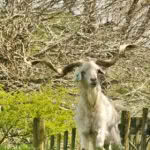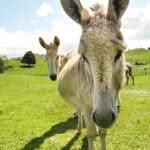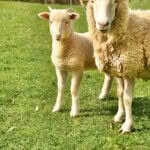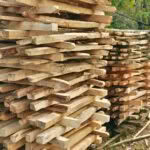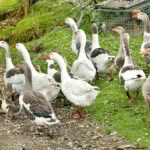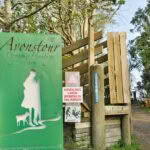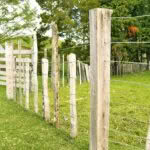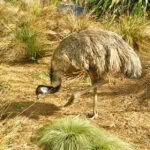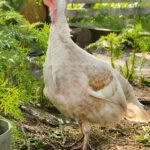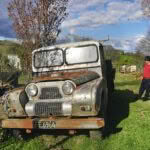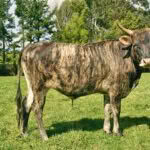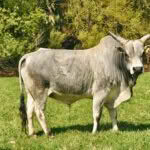Avonstour Island Heritage Farm: The weird, wonderful and rare breeds on this 16ha farm near Stratford
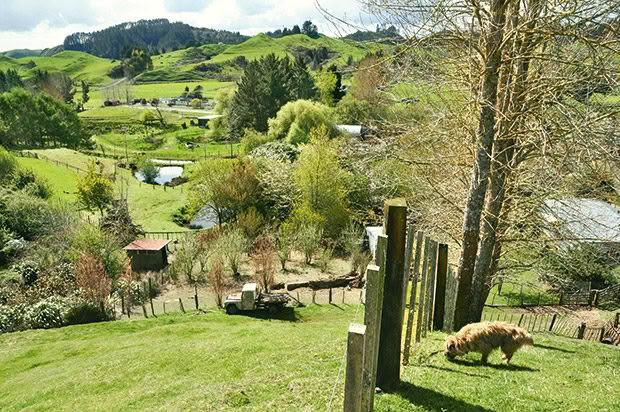
John Earney is a collector of many old things, including traditional livestock breeds.
Words & photos: Sheryn Dean
Who: John Earney
What: Avonstour Island, Organic Heritage Farm
Where: Huiroa, 1 hour south-east of New Plymouth
Land: 16 ha (40 acres)
Web: avonstourisland.co.nz & Facebook
Rare breeds enthusiast John Earney doesn’t believe in discarding the old and unwanted. Every animal – and every thing – has a value, even if it’s not apparent now. His flock of Wiltshire Horn sheep is a prime example.
In the 1900s, numbers of the self-shedding English meat breed were rapidly declining worldwide because wool was a more valuable commodity. But their hardy natures, shedding wool, and good meat value are now popular with block owners and commercial farmers. That they’re available in NZ is thanks to a few enthusiasts who kept breeding the animals, even when they weren’t popular.
“We couldn’t have done it if we didn’t have the genetics here.” Preserving rare breeds of livestock also gives NZ a bank of genetics to call on in case of a disease such as Foot & Mouth wiping out large numbers of NZ’s commercial herds and flocks. It’s also insurance against the effects of climate change, says John.
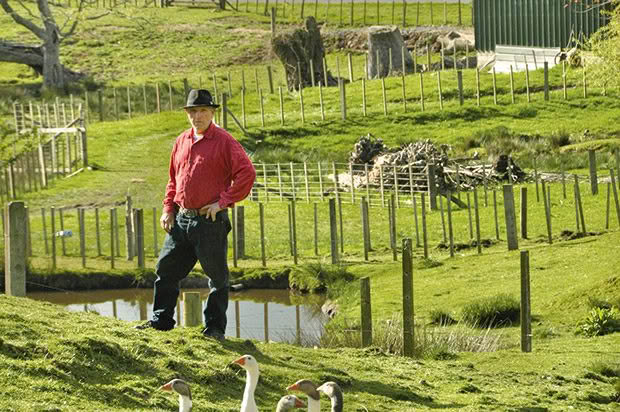
“If we were plunged into an ice age, the Enderby cattle would be the last cattle left. If we were plunged into a drought, the Zebu would be the only cattle to survive.”
His farm, just east of Stratford, is also home to old, weird, unusual things. If a movie studio needs its stars to roast an ‘albatross’ on camera, it’s John’s white geese that substitute for the protected species on set. If they need 30 donkeys, coloured wool, skulls with horns, or bits of antique machinery, John has that too.
“It’s a feast or famine business,” says John. “But you can’t supply it if you don’t have it. I’m just waiting for Sir Peter Jackson to remake Charlotte’s Web. He wouldn’t have to change a thing.” John’s love of animals dates back to his school days in England, where he showed poultry and pigs.
- A Waipu goat buck.
- A Ponui Island donkey.
He trained as a herpetologist, collecting reptiles and amphibians in New Zealand and from its offshore islands. The work taught him the value of rare genetics and the singularity of species.
“New Zealand lizards exist in really small colonies. Each species is really rare. You might get a pocket of a breed, and they’ll be on just one island or all in just a one kilometre section of a beach.”
It was the hunt for a striped forest skink that brought John to a farm in the Huiroa Valley, 25km and eight railways crossings inland from Stratford. It was the farmer’s daughter who convinced him to stay. John doesn’t have pet lizards anymore, but his Huiroa farm is now home to a lot of other island animals.
- A Dorset Horn ewe and her lamb.
- Homegrown, hand-made fence battens drying in the sun.
- West of England geese with a Chinese gander.
Many of New Zealand’s offshore islands were inhabited by sheep, cattle, donkeys, or rabbits, which were released by or escaped from early European settlers. Left to fend for themselves, the animals learnt to survive the harsh conditions, or die. The breeds became robust and disease-resistant out of necessity.
John’s passion became preserving these unique breeds and their genetics. His farm is named Avonstour Island: Avon and Stour, for the rivers near his childhood home; and Island, in honour of the insular nature of his operation. There’s a menagerie of rare breeds. Horned black Pitt Island sheep graze under trees at the entrance.
Blue Swedish ducks, colourful roosters, and hissing geese with gaggles of goslings squat along the driveway. White turkeys, Waipu goats, and a collection of rabbits in individual huts surround the house. Out in the fields are mobs of Stewart Island, Mohaka, Drysdale, Damara, Dorset Horn, Wiltshire Horn, and his own breed, the Avonstour Island sheep.
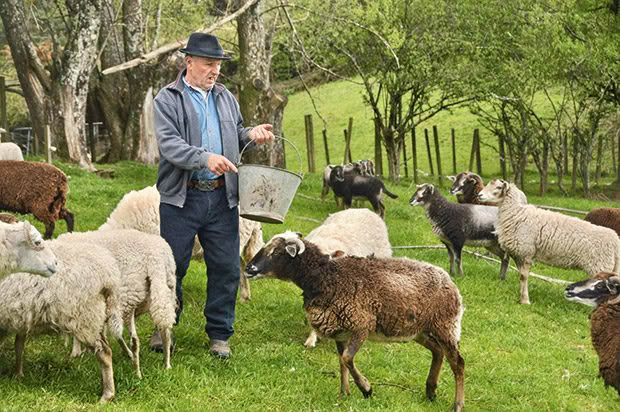
John with his Avonstour Island sheep, a breed he created from a mix of rare breeds.
On a hill above the farmhouse is his precious herd of pure Enderby cattle. The black bull bellows at you continuously, telling you his whole story while escorting you around his paddock.
The cows toss their heads, stomp their feet, and manoeuvre between you and their precious calves. It’s a behavioural characteristic first noted in the one original Enderby Island cow – Lady – who was brought back from the sub-Antarctic island to NZ to save her breed.
The fences that keep all these breeds contained are just as unique. The gates, fence posts, and battens are from trees that have been grown, harvested, milled, treated (off-farm), then put together by John. His carpenter training shows in the dozens of A-peaked wooden gates throughout the farm, each one swinging and shutting perfectly.
- John’s fences are all hand-made, from trees grown on the farm.
“The A-peak is for three things really,” says John. “A for Avonstour, to symbolise Mt Egmont (hiding under the clouds to the west), and also because I’m the sort of guy that likes things a bit different.”
His block has 40 paddocks, and John is subdividing more all the time to keep the nine breeds of sheep, four cattle breeds, rare donkeys, gypsy ponies, alpacas, three emus, and five different pig breeds separate from each other, and to isolate breeding partners. His rotational grazing practice is a complicated logistical exercise.
Preserving the rare breeds is done for passion, not profit. John used to sell meat at the local markets but now prefers to sell live animals to other breeders and farmers. He also sells red Kelpie dogs, which are exceptional at agility.
- Ziggy the emu.
- Australian buck turkey.
- An Austin Gipsy, one of three John owns.
The aim is self-sufficiency, but John concedes some money is necessary to pay the expenses. He hires out the property, animals, machinery, and tools for fashion shoots and as film props. He also makes a small, regular income from summer tourists who traverse the Forgotten World railway line. They can stop at the back paddock, pet a rare breed, and buy some of his heritage fruit jams.
John is also a qualified tutor, sharing his real-life experience in everything from breaking in horses to beekeeping. Other tutors are contracted in as required, and he decides on course subjects by request. He’s run courses on everything: handling donkeys, harness-making, butchering, smoking and curing meats, and growing unusual animals for meat, such as rabbits, game birds, and eels.
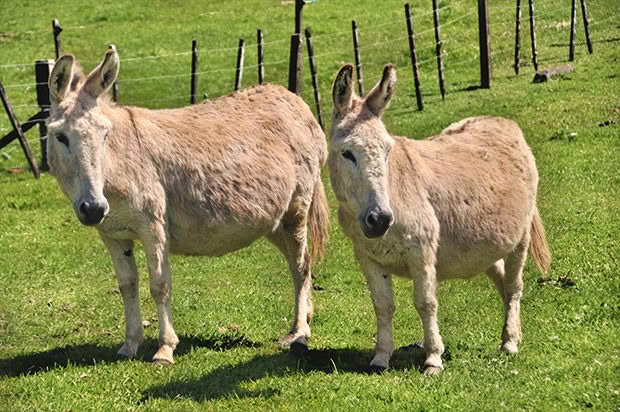
Ponui Island donkeys are descended from animals brought into NZ in the 1850s.
“We run courses which show people – not only new farmers but old farmers – how to live from the land, how to do things differently. If someone wants us to run a course on any subject, we’ll do it.”
One of John’s dreams is to teach people the power of draught animals. He’s currently training a pair of Nadudana Zebu-Dexter cross steers, Ponui donkeys, and even goats to harness so that they can pull equipment such as harrows, ploughs, and carts.
Learning, and helping with everything is a succession of volunteer woofers, Helpex workers, interns, and students, all overseen by John’s wonder assistant, Fiona Turner. Accommodation is offered in a range of unique and quirky wagons, a house bus, and a couple of boats.
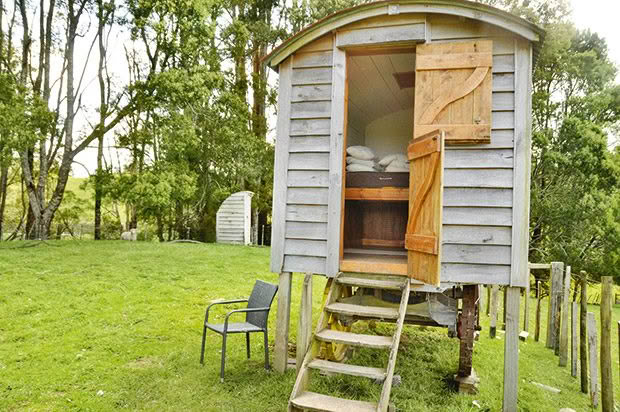
A Dorset Shepherd’s hut (and accompanying outhouse), built by John from Bishop Pine to provide accommodation. It’s a replica of the portable huts English shepherds would live in as they moved with their flocks around the fields.
John believes in diversity, in income, and on the farm. “The more layers of stock units you have, the more production. One animal eats what the other doesn’t. Look at our farm and a lot of things are happening, but most are looking after themselves because they’re looking after something else.”
For instance, his free range poultry controls the grass and the insects that attack plants. They fertilise the soil, clean up after the pigs, and harrow the manure. All ‘weeds’ are eaten by one animal or another, except for foxgloves. These can be fatal to sheep and are pulled out by hand, but everything else is part of an integrated sustainable system.
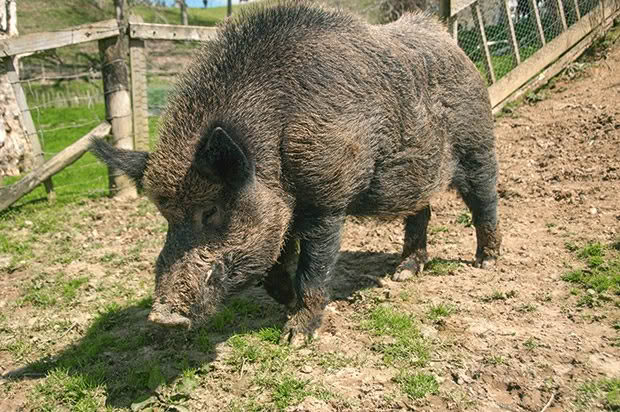
A European wild boar.
“To me, rare breeds are better for organics. They’re robust, resistant, and nutrient-dense, so they taste better – they were bred for taste. The Dorset Horn (sheep) was selectively bred (for taste) for hundreds of years. If they didn’t taste good, they didn’t breed from them.”
John may have been farming for 40-plus years, but his passion hasn’t wavered. “I want to change ever one who comes here by one percent, and I hope everyone goes away and changes someone else by one percent, because you can’t change anyone 100 percent. “I talk to so many people who work for money, hate their jobs, and are stressed out to the max. “How many lives have you got? I want to show people a different way.”
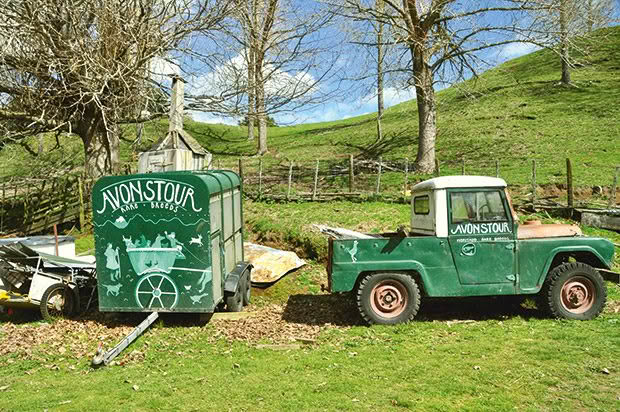
John’s market truck and trailer.
3 REASONS WHY WE NEED TO BREED RARE LIVESTOCK
Animals farmed in NZ are bred to meet consumer requirements. Most are from a narrow range of breeds with a small genetic lineage. Old, traditional breeds contain the original, unique genetics, like living time capsules from hundreds of years ago. That’s important, because:
1. Market fashions change over time, eg lean sheep are now favoured over fat breeds, goats are now valuable instead of a pest animal.
2. Rare breeds often have desirable genetic characteristics that can be used to improve commercial stock.
3. Rare and/or unusual breeds provide material for research.
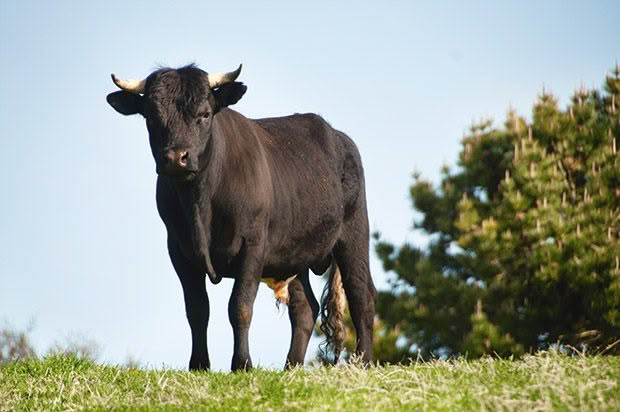
ENDERBY CATTLE
From: Enderby Island, 350km south of Stewart Island
Status: rare
Cattle were left to fend for themselves when settlers abandoned the sub-Antarctic Auckland Island in 1910. The possibly Shorthorn cattle evolved into a rugged breed which has a distinctive look compared to other breeds.
“They have large front ends and reasonably short legs because there has been no selection for larger back ends where the meat money is,” says John. “They climb and run differently from other cattle – they have a different gait.”
Enderby cattle foraged on the island’s megaherbs and seaweed until DoC decided to cull them due to the enormous damage they were causing to the natural biota and environment.
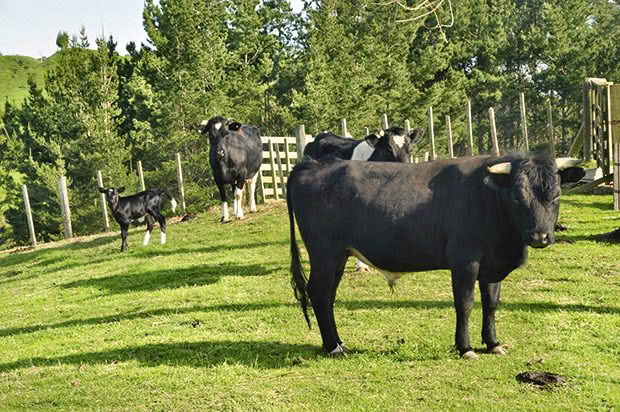
The NZ Rare Breeds Conservation Society harvested eggs and sperm to preserve the unique genetics before the cull began in 1991. However, none of the eggs were viable.
One cow, known as Lady, and a calf managed to evade the hunters and were retrieved from the island by members of the RBCS. Thanks to sophisticated artificial breeding techniques and luck over the past 25 years, there are now three small herds of Enderby cattle in NZ.
John likes their determined natures. “They’re more streetwise, intelligent, and size people up fast.”
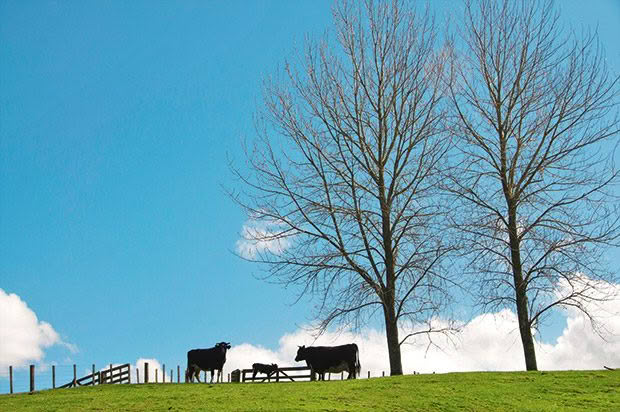
NADUDANA ZEBU CATTLE
From: Southern Asia, especially India
Status: rare, critically endangered worldwide
Captain (below) is a small but spectacular Nadudana Zebu bull who spends his days with John’s herd of Dexter cattle. Zebu cattle are distinguishable by the hump on their shoulder and dewlap under their chin. Nadudana is Hindi for ‘miniature cattle’. The breed reaches just 90cm-110cm at the shoulder, and were traditionally kept in temple grounds due to their size and good nature.
- Captain’s son Tiger, a Zebu-Dexter cross.
Common dairy breeds drop milk production and reproduction once it gets over 21°C, but the Zebu can handle much higher temperatures. It produces A2-type milk with high fat, and yields 60% lean meat. It has a high resistance to disease and bloat. It has also developed very strong sub-dermal twitches of the skin, which shake off ticks and flies.
The muscley hump, which develops with age, helps the animal cope with dry, hot conditions. It’s also a delicacy around the world for its tender meat.
SHEEP – AVONSTOUR
On John’s previous farm, the fences weren’t stock-proof. The odd sheep escaped into a rugged valley out the back where they interbred and flourished.
“I didn’t realise how many had accumulated back there,” says John. “When they cut the forest, I had about 100 sheep of an intermix of my rare breeds.”
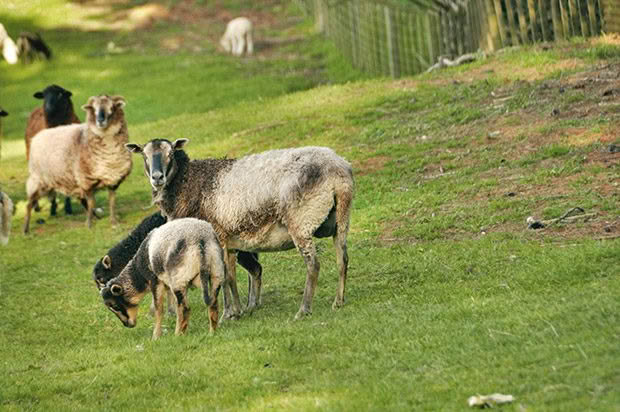
John selected the best, producing a self-shedding sheep with compact horns, and wool-free legs and belly. The sheep are black with a white belly and stripes, known as a Mouflon pattern. They’re the foundation of a breed John has christened Avonstour Island sheep.
JOHN’S FAVOURITE ANIMAL
“If I was ever backed into a corner and could only farm one thing, it would be sheep. The sheep is the most versatile animal. You can get wool, milk, and meat from it. They’re actually very smart – most people don’t know that – and they’re a good size to handle.
“We take bacon off them – lamb bacon – and steaks off the sheep. They’re really good on the manure end too, it’s high in potash.”
Love this story? Subscribe now!
 This article first appeared in NZ Lifestyle Block Magazine.
This article first appeared in NZ Lifestyle Block Magazine.
